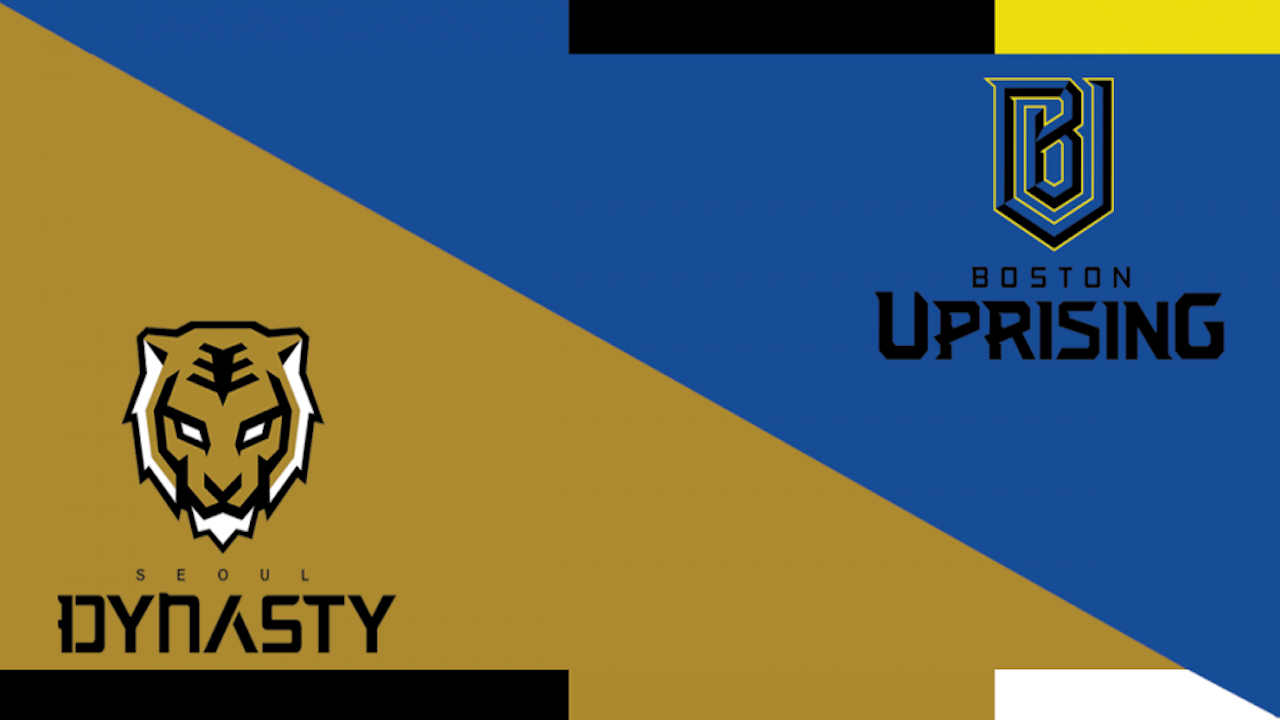In Friday’s matchups of the Overwatch League, the Philadelphia Fusion looked to overcome their prior loss to the top team of the season, the NYXL. They battled it out with what was, on paper, a far less challenging team, the San Francisco Shock. Meanwhile, the Shanghai Dragons aimed to prove themselves against another of the Overwatch League’s bottom-tier teams, the Florida Mayhem. But the game everyone was hyped to keep an eye on was the potential history-making match between the Boston Uprising and the Seoul Dynasty. The Uprising managed to defeat both the London Spitfire and NYXL – two of the Big 3. It then fell on the struggling Seoul Dynasty to stop this up-and-coming team from dethroning them as well.
The Philadelphia Fusion have looked extremely competitive since the latter half of Stage 2, and arguably even before them. Originally they were a team that flew under many people’s radar until they forced people to pay attention to them by going to the Stage 2 finals against the NYXL. There they put forth a strong showing but wound up getting reverse swept. They hoped to get revenge in their Stage 3 rematch, but history repeated itself. And the very following day saw their matchup against the San Francisco Shock on an almost entirely different map pool. A combination of this and the fatigue from the previous day likely led to their underperforming throughout the game.
The DPS titan that is Carpe, especially, didn’t perform to his usual standard. It seemed like he was never afforded the opportunity to “wake up,” missing several shots that he shouldn’t have. On top of this, the supports – Neptuno and Boombox – seldom seemed to be on the same page. All throughout the game, they were almost always the first to die. Only on Map 3, Nepal, did the Fusion seem to put up much of a fight at all. This isn’t to take anything away from the San Francisco Shock, however. Despite them not being the favored team to win, they put out an incredibly aggressive and competitive showing. Architect showed up massively on his Widowmaker. It’s just unfortunate that Carpe didn’t really show up to make the “Dance of the Widowmakers” more engaging.
The Shanghai Dragons continue to be a steadily improving team, but ultimately still struggle with new problems. While the language barrier is no longer as much of a problem, there’s still a lack of communication and coordination. The Dragons are exceptionally good at fragging out in engagements, but their indecisiveness hurt them several times. Their tank play is especially strong, with Geguri, in particular, pulling out clutch play after clutch play. But they still fell, in the end, to the Mayhem, 3-1.
Then came the Boston Uprising vs. the Seoul Dynasty. This match was always going to be intense. They’re the only other team to go undefeated in Stage 3 with the LA Valiant, at the time of writing this. Meanwhile, Seoul struggles to regain its footing on the back of some tough losses. They managed to defeat the San Francisco Shock in Week 1, the Dallas Fuel in Week 2, and the Shanghai Dragons in Week 3. None of which are surprising. But they famously lost to the LA Valiant in Week 1 with a dominant clean sweep. They fell to the LA Gladiators in Week 2. And now, as of Week 3, they’re 3-3 in the standings. The Boston Uprising made history by being the first team to topple every single one of the Big 3.
Volskaya went the way of the Uprising in an unsurprising display. To date, the Uprising have not lost Volskaya Industries or Temple of Anubis once. They simply play far too disciplined to really be exploited on that map. But the game really began on Blizzard World, where the two teams actually forced a draw. Both teams were able to successfully push the payload to the end of the map, but neither was able to make any objective progress in time-bank. A large portion of this match came down to the power of the new Sombra, when in the hands of Mistakes, on the Uprising. Another factor was Seoul’s tendency to overcommit to fights that are already lost, especially with support ultimates.
Nepal saw Seoul adapt to the Sombra by running multi-tank with a McCree. Multi-Tank compositions primarily rely on the Roadhog in the composition to hit hooks in order to drag out-of-position enemies into worlds of damage. With the addition of McCree to the mix (instead of the more common Junkrat), the idea is to prevent the Sombra from translocating with the high amounts of CC. The downside to this is that Multi-Tank, as a composition, needs to constantly stick together. So if the Sombra is allowed to farm up her EMP, that leaves them extremely exploitable. The Reinhardt is especially vulnerable. An EMP’d Multi-Tank comp is also very weak to Pulse Bombs. Striker proved that much on Nepal Shrine. However, they did eventually force Mistakes to swap off of Sombra. This came in no small part due to the monstrous hooks being landed by Fleta.
Unfortunately for the Dynasty, they went on to lose Nepal, 2-1, thus losing the series to the Uprising. They did manage to secure a win on Route 66. They’re extremely good at defending on Route 66, especially when Fleta is allowed to take advantage of the high ground and angles of Point B. With that in mind, they were able to snuff Boston’s attack after Point A, then comfortably push the payload the distance. Fleta came alive on this map, very convincingly winning the Widow-duel against Mistakes. Still, while it may have been a map victory, the series went to the Boston Uprising, 2-1.
Saturday’s matchups include the LA Valiant vs. the London Spitfire. The Spitfire are looking for some redemption after a series of tough losses. Not only did they lose to the Uprising, but also the Fusion. The NYXL will take on the LA Gladiators and the two Texan teams will have their rematch in the Dallas Fuel vs. Houston Outlaws.











